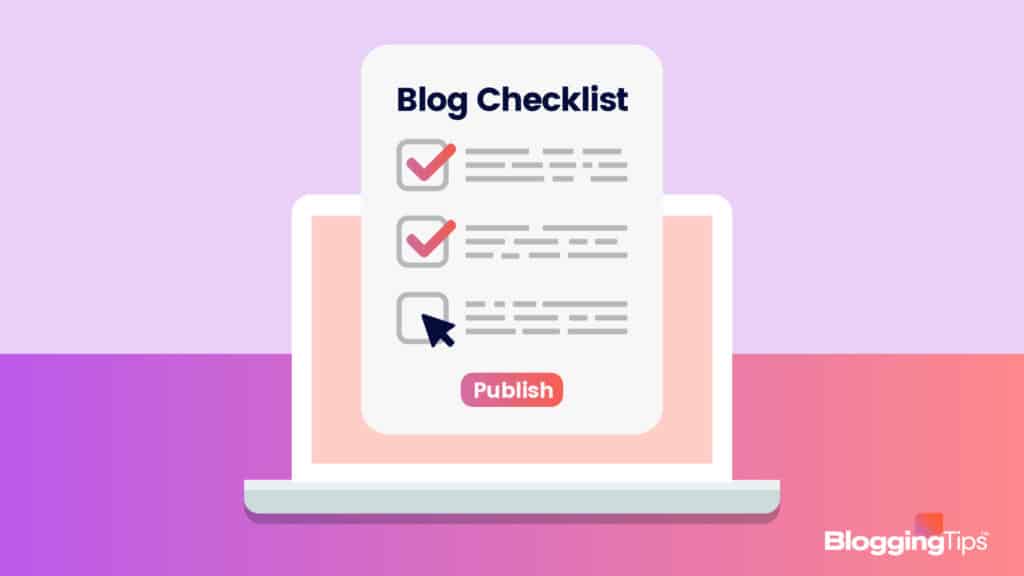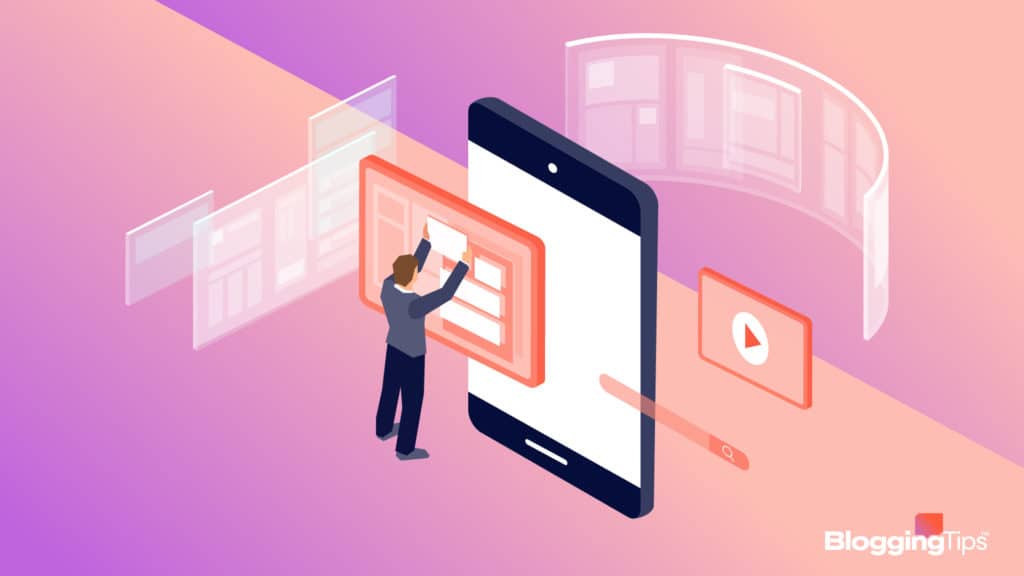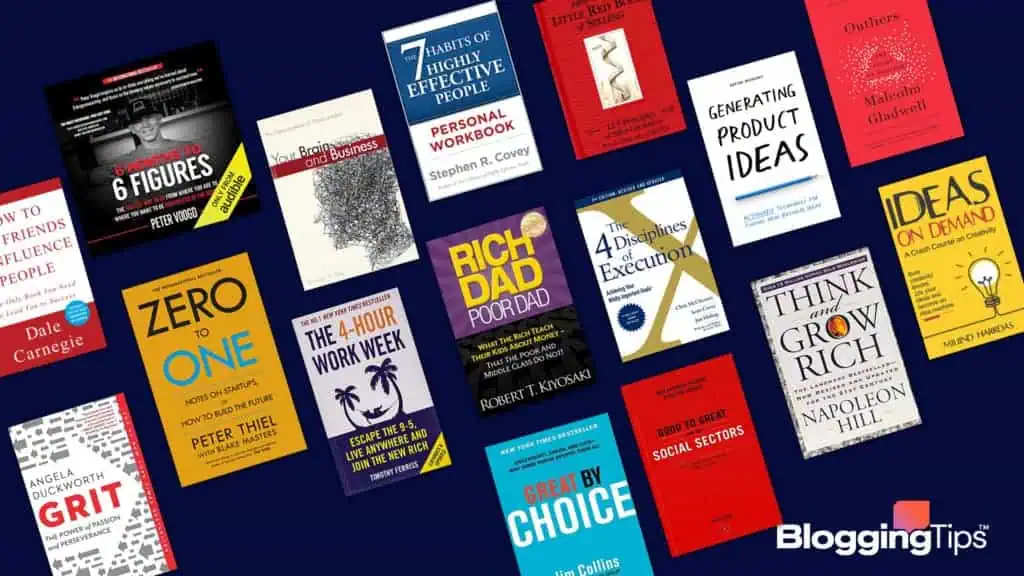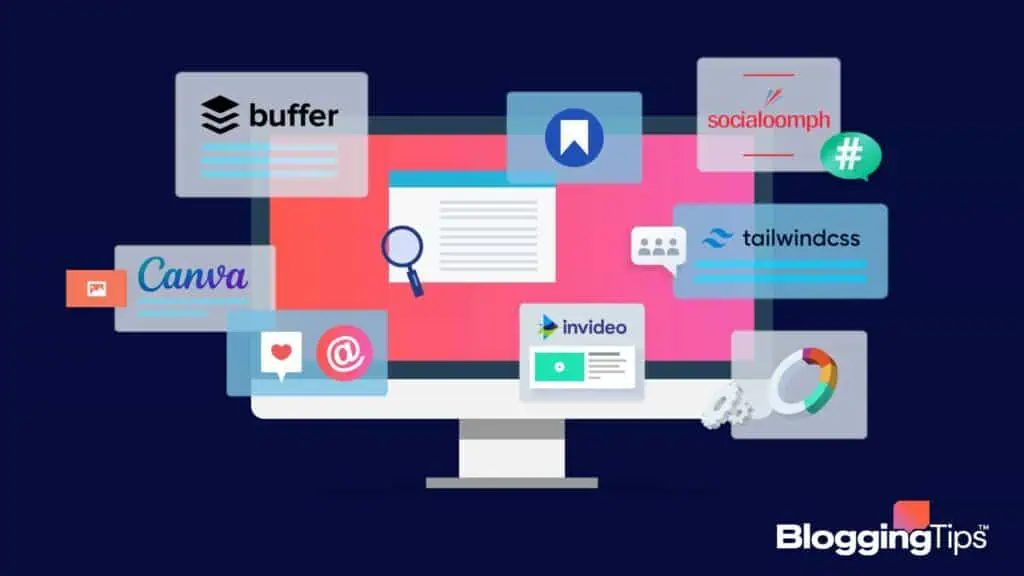30+ Blogging Tips That Will Help You Maximize Success


Blogging is a powerful tool to help you share your ideas, build an audience, and grow your business. But if you want to make the most of blogging, there are some things you need to know.
These blogging tips are handy if you’re a beginner just starting. Not only will they help you get more out of your blogging experience, but they’ll also save you time and frustration as you get started and work on your blog.
What Makes a Blog Successful?
There is no one answer to this question. Every successful blog is different, and what works for one blogger may not work for another.
However, there are some key ingredients that every successful blog has in common. These include:
- A focus on a specific topic or niche.
- High-quality content that is interesting, informative, and engaging.
- A unique voice and perspective.
- Regular updates that keep readers coming back for more.
- A clean, easy-to-navigate, and visually appealing design.
- A community of engaged readers who interact with the blog and each other.
Now that you know what makes a blog successful let’s look at the types of blogs that make money.
What Type of Blogs Make the Most Money?
There are many different types of blogs that make money. The key is finding a niche you’re passionate about and then finding a way to monetize your blog.
Here are some of the most popular types of money-making blogs:
- Affiliate marketing blogs promote products and services they believe in and make money by earning sales commissions.
- Product review blogs provide reviews of products and services and make money through affiliate sales or sponsored posts.
- Travel blogs document the author’s travels and make money through advertising, affiliate sales, or sponsored posts.
- Lifestyle blogs focus on fashion, food, and beauty and make money through advertising, affiliate sales, or sponsored posts.
Blogging Tips for Starting a Blog
Here are some quick tips for how to start your blog!

1. Start With The End in Mind
When you’re just starting, getting caught up in all the details of starting a blog is easy. But if you want to be successful, it’s essential to begin with the end in mind.
- What are your goals for your blog?
- What do you want to achieve?
Once you know your goals, you can work backward to determine the steps you need to take to get there.
2. Properly Choose Your Niche
One of the most important blogging tips for beginners is to choose a niche and target keywords that are relevant to your niche.
If you try to be everything to everyone, you’ll end up being nothing to no one.
But if you focus on a specific niche and target the right keywords, you’ll likely attract readers interested in what you have to say.
Of course, the best way to choose your niche is to think about what you’re passionate about and what you have expertise in.
3. Get User Intent
User intent is understanding what your readers are looking for when they land on your blog.
When you know the user intent of your target keywords, you can create content that meets their needs and helps them achieve their goals.
There are three main types of user intent:
- Informational: People looking for information or answers to their questions.
- Navigational: People looking for a specific website or page.
- Transactional: People looking to buy something or take action.
Your goal should be to create content that meets the needs of your target audience.
Correct Blogging Tips for Building a Blog

1. Build on a Proven, Solid Tech Stack
A lot of would-be bloggers never start because they get bogged down in all the technical details. But to be successful, you must have a solid tech stack.
That means using the right blogging platform, hosting provider, and theme. It also means using the right plugins and tools to help you manage your blog.
We recommend using WordPress as your blogging platform and Bluehost as your hosting provider.
WordPress is the most popular blogging platform in the world, and Bluehost is one of the most affordable and reliable hosting providers.
2. Invest in Design Now, Rather Than Later
One of the biggest mistakes new bloggers make is skimping on design.
They either use a free theme or try to DIY their design.
But if you want your blog to look professional and be taken seriously, you need to invest in a high-quality design.
A good design will help you stand out from the crowd, build trust with your readers, and make it easy for people to find the information they’re looking for.
You can find a great selection of WordPress themes on ThemeForest.
Choosing the right design from the beginning is best rather than trying to upgrade your design later.
That’s because a good design will be built on a foundation of good code and well-designed templates, which can be hard to change later.
3. Go Live Quickly, Then Tweak As You Go
One of the beginner’s biggest blogging tips is to go live quickly and then tweak as you go.
Getting caught up in all the details of starting a blog is easy, and trying to make everything perfect before you launch.
But the truth is, there’s no such thing as a perfect blog.
The best way to learn is by doing.
So, once you’ve set up your blog, hit the publish button.
Then, you can start making changes and improvements based on feedback from your readers.
Blogging Tips for Growing a Blog
Grow your blog naturally with these tips.

1. Ensure Content Readability: Don’t Overcomplicate Things
Once you’ve built your blog, you’ll want to focus on growing it.
One of the best ways to do that is by ensuring your content is easy to read and understand.
That means using short paragraphs, clear headlines, and simple words and phrases.
A program like the Hemingway App can help with this.
It can also be helpful to use bullet points, numbered lists, and other visuals to break up your content and make it easier to scan.
But, again, the goal is to make your content as easy to consume as possible so people will keep returning for more.
2. Update Old and Stale Content
If you want your blog to grow, you need to keep your content fresh.
That means regularly publishing new articles and updating old ones.
Google loves fresh content, so the more frequently you update your blog, the better your chances of ranking high in search results.
It’s also important to update your content, so it doesn’t become stale and outdated.
If people come to your blog and find information that’s no longer relevant, they’re not likely to come back.
Set up a content calendar and schedule regular updates to ensure your content is always fresh.
That way, you can ensure you’re always putting out new and relevant content.
3. Build an Email List From Day One
One of the best beginner blogging tips is building an email list from day one.
An email list is a group of people who have permitted you to contact them via email.
Email lists are incredibly powerful, and you can use them to build relationships, drive traffic, and sell products or services.
The best way to create an email list is to offer something of value in exchange for people’s email addresses.
This is typically done by setting up a lead magnet, such as a free ebook or email course.
Once you have a lead magnet, you need to set up a way to capture email addresses, which you typically do with an opt-in form, which you can add to your website using a plugin like OptinMonster.
Once you’ve set up your opt-in form, ensure you promote it to your audience.
You can share it on social media, mention it in your blog posts, or even run ads.
Related Resource: How to build an email list from day one
4. Establish Yourself as an Expert
To grow your blog, you must establish yourself as an expert in your niche.
The best way to do that is by creating helpful and informative, high-quality content.
But it’s not enough to just write good content.
You also need to make sure as many people see your content as possible.
That means promoting it on social media, guest posting on other blogs, and getting involved in online communities.
The more you can do to get your name and content out there, the better.
Eventually, people will start to see you as an expert and will be more likely to visit your blog and share your content.
5. Provide an Incentive To Keep Your Audience Coming Back
If you want people to keep coming back to your blog, you need to give them a reason.
That’s where providing an incentive comes in.
One of the best ways to do this is by offering something for free, such as an ebook, email course, or PDF download.
People are always looking for freebies, so this is an easy way to get them to keep coming back to your site.
You can offer exclusive content, such as behind-the-scenes blog posts or early access to new products or services.
Doing this is a great way to build loyalty and keep people coming back for more.
Finally, you can offer discounts and coupons to people who subscribe to your blog or email list.
Doing this is a great way to encourage people to keep coming back, and it can also help you boost sales.
Related Resource: How to increase user engagement on a blog
Blogging Tips for Productivity

1. Remain Productive
Building a blog is all about productivity.
Therefore, you must find ways to work efficiently to get the most out of your time.
There are a few things you can do to stay productive when blogging.
Focus On Most Important Tasks First
When you’re blogging, it’s essential to focus on the most critical tasks first.
That way, you can ensure you’re getting the most important things done and not wasting time on tasks that aren’t as important.
To do this:
- List all the jobs you need to do for your blog.
- Prioritize them from most important to least important.
- Once you have your list, start working on the most critical tasks first.
You can also use the 80/20 rule to help you prioritize your tasks.
This rule states that 20% of your activities will account for 80% of your results.
So, you should focus on the 20% of tasks that will give you the most results.
Don’t Take Meetings Unless Absolutely Necessary
Meetings can be a huge time waster, so it’s essential only to take them if necessary.
If you can accomplish something through email or a quick phone call, there’s no need to have a meeting.
Of course, some meetings are necessary.
For example, if you’re meeting with a potential client or partner, it’s essential to have a face-to-face meeting.
But, if you’re just meeting with someone to catch up, it’s probably not necessary.
When you have meetings, ensure they’re as productive as possible.
Start by creating an agenda and sending it to everyone attending the meeting.
That way, everyone knows what needs to be discussed.
During the meeting, stay on topic and don’t allow side conversations to take over.
It’s also a good idea to have someone take notes so you can focus on the discussion.
Related Resources:
2. Craft Goals and Achieve Them
Another way to remain productive while building a blog is to set goals and achieve them.
Having specific goals will help you stay focused and on track.
To set goals, start by thinking about what you want to accomplish with your blog.
For example, do you want to reach a certain number of page views?
Do you want to make a certain amount of money
Do you want to get a certain number of email subscribers?
Once you have your goals, break them down into smaller, more manageable goals.
End Goal: Stretch Goal
An end goal is a goal that you ultimately want to achieve.
For example, your end goal might be to make $100,000 from your blog.
A stretch goal is a goal that’s slightly out of reach.
You can strive for and eventually achieve it, but it might take time and effort.
For example, your stretch goal might be to make $10,000 from your blog in the next year.
This is an achievable goal, but it will require you to work hard and be creative.
Setting end and stretch goals will help you stay productive and motivated as you build your blog.
Yearly Goals
You can break down your end and stretch goals into yearly goals, which will help you track your progress and see how close you reach your goals.
Yearly goals are great because they give you something to strive for each year.
Monthly Goals
You can also break down your yearly goals into monthly goals, which will help you stay on track and make sure you’re making progress each month.
Monthly goals tend to be more manageable and less overwhelming than yearly goals.
Weekly Goals
Once you have your monthly goals, you can break them down into weekly goals, which are one of the most granular levels of goal setting, and they will help you stay on track week-to-week.
You can review these goals every Sunday, for example, so that you know what to work on the rest of the week.
Daily Goals
You can also set daily goals to help you stay productive.
Daily goals are small and manageable, which makes them easy to achieve.
Some daily goals you might want to set include writing a certain number of blog posts, promoting your blog on social media, or reaching out to other bloggers.
No matter your goals, it’s essential to ensure they’re realistic.
Setting unrealistic goals will only lead to frustration and disappointment.
Start by setting small, achievable goals.
Then, as you accomplish those goals, you can start to set more significant and challenging goals.
Understand Scaling & Growth

1. Use of Systems
Scaling and growth are two of the most critical aspects of building a blog.
Without scaling and growth, your blog will eventually plateau.
To scale your blog, you need to understand how to use systems.
Systems are processes or methods that you can use to automate or simplify tasks.
For example, you might use a system to post your blog content to social media automatically.
Or, you might use a system to manage your email list.
Using systems will help you scale your blog and free up your time so you can focus on other tasks.
2. Use of Templates
Another way to scale your blog is to use blog post templates.
Templates are pre-made designs or layouts that you can use to save time.
For example, one type of template is a blog post template.
A blog post template is a pre-made design that you can use for your blog posts.
This template type can include the post title, images, and subheadings.
Templates will help you save time and be more consistent with your blog posts.
3. Use of Outsourced Labor
One of the best ways to scale your blog is to use outsourced labor.
Outsourcing is when you hire someone else to do a task for you.
For example, you might hire a Virtual Assistant (VA) to help you with tasks like scheduling blog posts, promoting your blog on social media, or replying to comments.
Hiring a VA is a great way to scale your blog because it frees up your time so you can focus on other tasks.
Other tasks that you can outsource when building a blog include:
- Designing graphics
- Editing videos
- Writing blog posts to freelance writers
- Doing research
By understanding how to scale your blog, you’ll be able to grow your blog more quickly and efficiently.
While outsourcing is a great way to grow your blog, you’ll likely want to make sure you can do everything yourself so that when you do outsource, you can better hire the right people to outsource your work.
What to Avoid in Blogging

1. Be Unique: Don’t Steal The Ideas of Others
One of the most important things to avoid in blogging is stealing ideas from others.
It’s essential to be unique and come up with your own ideas.
You’ll quickly run out of things to write about if you steal ideas.
Plus, it’s just not ethical.
So, ensure you’re coming up with your ideas and not stealing from others.
If you’re ever stuck for ideas, there are a few places you can look for inspiration, such as:
- Your own life experiences
- The news
- Other blogs in your niche
- Books and articles
- Social media
2. Thinking You Know It All
Another thing to avoid in blogging is thinking you know it all.
Instead, be open to learning new things. Even if you’re an expert in your field, there’s always more to learn.
You’ll miss opportunities to learn and grow if you think you know it all.
Plus, connecting with your readers will be more challenging if you’re not open to learning new things.
3. Getting an Ego
Similar to thinking you know it all, it’s also essential to avoid getting an ego.
Ego is when you think you’re better than others.
The reason it’s crucial to avoid an ego is that it’ll make it harder for you to connect with your readers.
You’ll come across as arrogant and self-centered if you have an ego.
Plus, you’ll miss out on opportunities to learn from others since you think you already know everything.
Here are some signs that you might be getting an ego:
- You’re only interested in your own opinion.
- You’re not open to criticism.
- You think you know more than others.
- You’re not willing to learn new things.
- You’re always right.
If you notice any of these signs, especially as you’re building your blog, it’s essential to check your ego.
4. Buying Too Many Tools & Subscriptions
For many new bloggers, one of the biggest temptations is to buy too many tools and subscriptions.
While having the right tools for your blog is essential, you don’t need to buy every tool out there.
Plus, many of the tools you need are free or have free trials.
So, avoid buying too many tools and subscriptions when first starting.
You can always add more later as your needs change.
Related Resource: How to manage subscriptions using subscription management
5. Lacking Patience & Discipline
Building a blog takes time, patience, and discipline.
You won’t be successful if you’re unwilling to do the work.
There are no shortcuts when it comes to building a blog.
Many new bloggers give up too soon because they don’t see results immediately.
But it takes time to build an audience and grow a blog.
It can take months or even years to see significant results.
There are many examples of successful bloggers who’ve been blogging for years.
So, don’t give up if you do not see results immediately.
Instead, keep working, and know that if you stick with it, you’ll eventually see the desired results.
6. Compromise on Quality
A lack of patience is often coupled with a willingness to compromise on quality.
For example, a blogger might be willing to publish low-quality content just to get something published.
However, it’s vital to avoid compromising on quality.
If you post subpar content, your readers will quickly lose interest.
Plus, it’ll be harder to build a successful blog if you’re not posting quality content.
So, make sure you’re taking the time to create high-quality content.
Even if you have to publish less often, it’s better to post one high-quality article than several low-quality ones.
7. Doing What “Everybody Else Does” Because “It Works for Them”
One thing to remember when building a blog is that what works for others might not work for you.
Just because a particular strategy or tactic works for somebody else doesn’t mean it’ll work for you.
For example, just because a specific type of headline works well for another blogger doesn’t mean it’ll work well for you.
You must experiment and find what works best for you and your blog.
Don’t just do what everybody else does because you think it’ll work.
Instead, try different things and see what works best for you and your blog.
You’ll find what works best for you and your audience as you experiment.
8. Don’t Take Shortcuts: Make Something You Can Be Proud Of
Finally, don’t take shortcuts when building your blog.
It’s essential to create something you can be proud of.
If you take shortcuts, it’ll be evident in your blog.
Your readers will be able to tell you didn’t put in the effort, and they’ll quickly lose interest.
So, take the time to build a high-quality blog that you can be proud of.
It might take longer, but it’ll be worth it
Wrapping Up
If you’re a beginner blogger, you need to know plenty of things to be successful.
These tips will help you build a successful blog, from avoiding an ego to not taking shortcuts.
Remember that being a successful blogger takes time, patience, and discipline.
So, don’t give up if you do not see results immediately.
Just keep working at it, and you’ll eventually see the success you want.





Responses